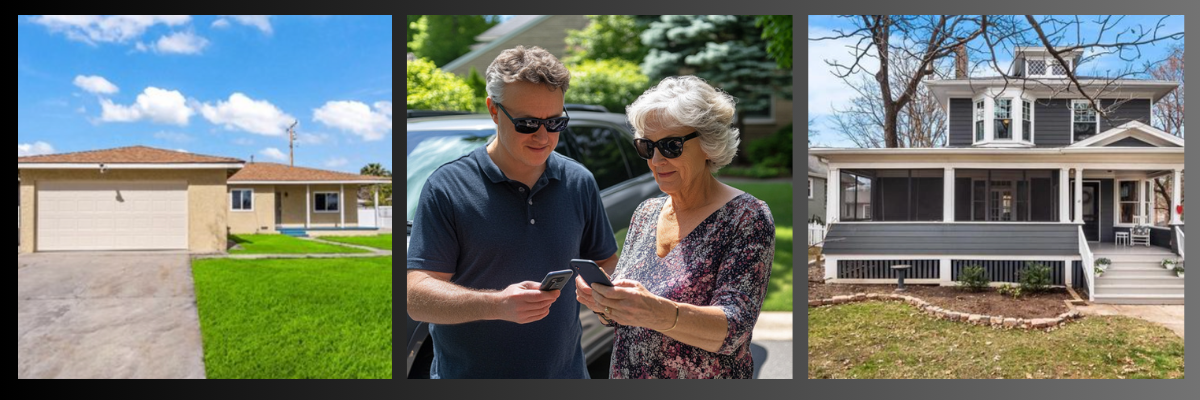The dream of homeownership remains strong for many Americans, including those navigating life after retirement or managing fixed incomes. In 2025, rent-to-own homes have become an increasingly talked-about alternative for individuals who may not qualify for traditional mortgages, want more flexibility, or simply need time to prepare for a purchase. But while rent-to-own agreements can offer a path forward, they also require careful planning and clear understanding. This guide explains how rent-to-own housing works in 2025, who it may be suited for, what to watch out for, and which platforms and resources can help with the search. With more companies offering rent-to-own options and more renters looking for ways to invest in their future, the topic has gained fresh relevance—especially for adults over 50 exploring new living arrangements.
What Is a Rent-to-Own Home?
A rent-to-own agreement (also called a lease-to-own or lease-option) is a housing contract that allows a renter to lease a home with the option to buy it at a later date. Typically, the tenant agrees to rent the home for a set number of years, with a portion of the monthly rent going toward the eventual purchase price.
There are two main types of rent-to-own agreements:
- Lease-option: The renter has the option—but not the obligation—to buy the home at the end of the lease.
- Lease-purchase: The renter agrees in advance to purchase the home after the lease ends.
According to data from Zillow Research (2024), interest in rent-to-own programs increased by over 18% from 2022 to 2024, with much of the growth driven by renters aged 45 and older seeking more stable housing [1].

Why Rent-to-Own Is Attracting Attention in 2025
The real estate market remains competitive in many areas, with interest rates higher than pre-pandemic levels and home prices staying elevated in suburban and metropolitan regions. For those who may have limited savings for a down payment or need time to improve their credit, rent-to-own offers a chance to lock in a future purchase while living in the home.
“Rent-to-own programs allow flexibility while giving people a foothold in the market,” says Glenn Brunker, president of Ally Home. “It’s especially helpful for those who expect their financial situation to improve over time.” [2]
Many individuals over 50 also appreciate the opportunity to test a neighborhood, adjust to retirement income, or move closer to family before fully committing to a home purchase. However, not all rent-to-own agreements are the same, and it’s essential to understand the terms.
Key Terms to Understand in Rent-to-Own Agreements
- Option Fee: An upfront payment (often 1% to 5% of the home price) that gives the renter the exclusive right to purchase the home later. It’s usually non-refundable but often applied to the home’s purchase price.
- Rent Premium: An extra amount added to monthly rent that may be credited toward the down payment.
- Purchase Price Agreement: Some contracts lock in the future home price; others may appraise the value at the end of the lease term.
- Maintenance & Repairs: Responsibility for repairs may fall on the tenant during the lease term—this should be clarified in writing.
- Financing Timeline: Renters typically need to secure financing before the option period ends if they plan to buy.
Recent Trends and Data in 2025
- Increased Platform Availability: Companies like Divvy Homes, Landis, and Home Partners of America have expanded services across more states, offering rent-to-own with online application tools and credit coaching support.
- Fixed-Rent Premiums: More providers are offering transparent rent credits, often between $250 and $500 per month, applied to future purchase terms.
- Technology Integration: Listings are now available on traditional sites like Zillow and Realtor.com with “Rent-to-Own” filters, making it easier to identify options locally.
- Senior-Specific Programs: Some rent-to-own companies now offer agreements that cater to retirees or individuals with fixed incomes, offering longer lease terms and credit assistance.
How to Search for Rent-to-Own Homes in 2025
1. Use Trusted Websites and Filters
- Zillow – https://www.zillow.com
- Use the search filter for “Rent-to-Own” or browse homes with lease-option tags in the rental section.
- Divvy Homes – https://www.divvyhomes.com
- Offers rent-to-own programs with credit-building tools and guided purchase planning.
- Home Partners of America – https://www.homepartners.com
- Available in over 20 states. They allow renters to choose homes from listings and apply to rent them with an option to buy later.
- Landis – https://www.landis.com
- Targets renters who need a pathway to ownership, with an emphasis on financial coaching and prequalification support.
- Realtor.com – https://www.realtor.com
- Search local listings and use keywords like “rent to own” or “lease option” to find active homes.

2. Compare Listings in Your ZIP Code
Start by entering your ZIP or preferred city and apply search filters to highlight only rent-to-own options. Look for listings that include details about lease terms, option fees, and future purchase prices. If working with a local real estate agent, ask if they have rent-to-own clients or can connect with national programs operating in your state.
FAQs About Rent-to-Own Housing
Q: Do all rent payments count toward the home purchase?
Not always. Be sure the agreement states that a portion of rent will be credited and what conditions must be met to use those funds.
Q: What if I decide not to buy the home?
In lease-option agreements, there’s usually no penalty, though the option fee and rent premiums may not be refunded.
Q: Can I qualify if I have poor credit or limited savings?
Some programs specialize in helping renters build credit and save during the lease, but applicants should still demonstrate income stability.
Q: Are these homes available in all areas?
Availability depends on region. Large suburban markets often have more inventory. Use platforms like Divvy or Home Partners to check ZIP-specific coverage.
Q: Do I need a real estate agent?
It’s not required, but working with an agent can help ensure that contract terms are clear and the property is fairly priced.
Helpful Resources
- Zillow Rent-to-Own Search – https://www.zillow.com
- Divvy Homes Program Info – https://www.divvyhomes.com
- Home Partners Application – https://www.homepartners.com
- Landis Buyer Program – https://www.landis.com
- Consumer Financial Protection Bureau (CFPB) – https://www.consumerfinance.gov
Rent-to-own homes in 2025 offer a flexible path toward homeownership for those not yet ready to buy outright. With tools, apps, and platforms making it easier to browse and apply, individuals can explore this option with greater clarity. For those over 50 who are downsizing, relocating, or planning for the future, rent-to-own may be a practical alternative—especially when supported by the right information, trusted resources, and well-written agreements.
Citations
[1] Zillow Consumer Housing Trends Report, 2024
[2] Glenn Brunker, President of Ally Home – HousingWire Interview, 2024
[3] National Association of Realtors (NAR) – Rent-to-Own Report, Q4 2024
Disclaimer
This article is for educational purposes only. Rent-to-own agreements vary by provider and location. Always consult with a licensed real estate professional and read all terms carefully before entering into any contract.



